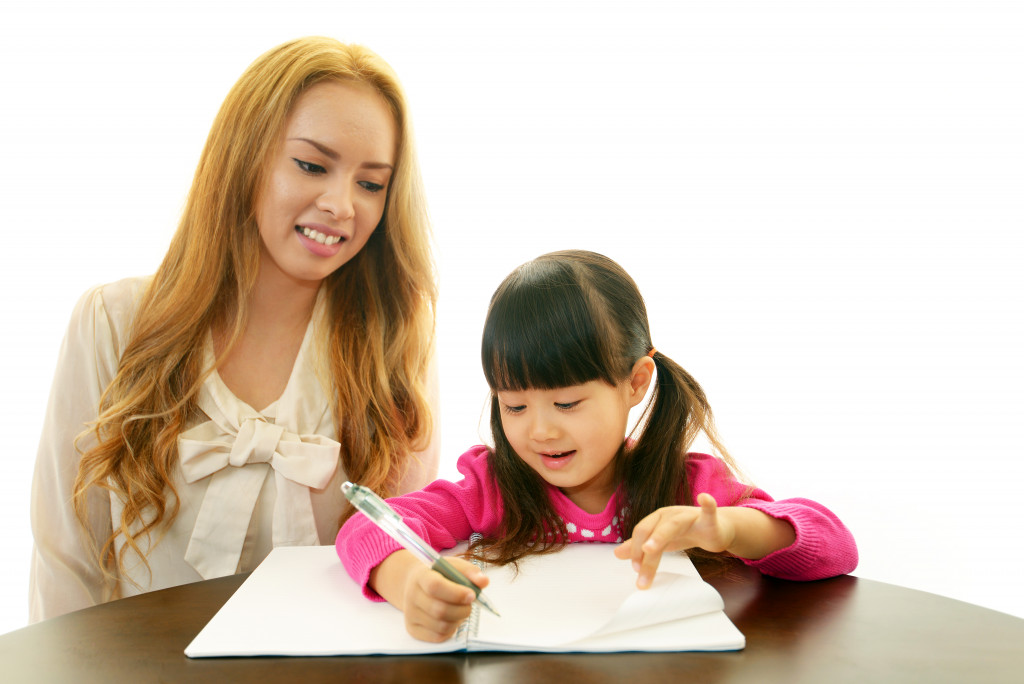- Innovative teaching techniques engage students and build critical thinking skills, resulting in higher academic achievement.
- Integrating Science, Technology, Engineering, Arts, and Mathematics, STEAM education prepares children for a rapidly changing economy.
- Digital learning provides accessible and personalized education, using technology to communicate with peers and teachers.
- Charter schools offer an alternative to traditional public schools, providing unique educational approaches, emphasis, and school choice for parents.
- Collaborative learning fosters teamwork and problem-solving, teaching children to counter other viewpoints and work effectively as a team.
Education is a critical aspect of a child’s development, and ensuring they receive the best education possible is essential. Innovative teaching techniques and staying current with the latest educational trends are crucial factors contributing to a child’s academic success. Incorporating innovative teaching techniques can help boost a child’s education by engaging them in the learning process and making it more enjoyable.
Additionally, keeping up with the latest educational trends can provide educators and parents with valuable insights and resources to help children achieve their full potential. This article will explore the importance of innovative teaching techniques and the latest educational trends for children and teens.
Benefits of Innovative Teaching Techniques
There is an increasing need for educators to resort to innovative teaching techniques that not only keep students curious and engaged but also help develop critical thinking skills. Here are some innovative teaching techniques and how they can enhance your child’s education.
Increased Student Engagement
Innovative teaching approaches offer a fresh and engaging way for students to learn. By integrating technology, students can become more interested in the subject as they develop their computer skills. One example is using online resources and platforms to facilitate lectures and activities, which can be accessed both in and out of the classroom.
Another way is to use interactive activities, such as group discussions or mini-projects, where students can collaborate with peers and solve problems in fun yet challenging environment.
Enhanced Critical Thinking Skills
Innovative teaching techniques are also designed to develop students’ critical thinking skills. Project-based learning, for instance, involves students working on a complex long-term project that requires them to identify problems, analyze data, develop solutions, and evaluate arguments. This approach prepares them to be good thinkers, problem solvers, and decision-makers.
Teachers can also employ flipped classrooms, where students watch videos or read the content before class and use classroom time to ask questions, discuss, and apply their understanding. By doing so, students learn to think independently and creatively.
Improved Retention of Information
Another benefit of innovative teaching techniques is that students are more likely to remember what they have learned. Research has shown that students’ retention rates are significantly higher when they participate actively in their learning.
Interactive activities like quizzes or games can help keep the material lively and memorable. Additional techniques that work include mnemonics, which help students remember information through the use of catchy acronyms or rhymes.
Higher Student Achievement
Finally, the ultimate benefit of innovative teaching techniques is that students can achieve higher scores than those who rely on traditional methods. For example, flipped classrooms and project-based learning have been shown to improve academic performance across different age groups and subject areas.
When students are more invested in their education, they are more likely to put in extra effort to succeed in their studies.
Examples of Innovative Teaching Techniques
Project-based Learning
Project-based learning causes students to work together to solve a complex question or real-world project involving creativity, critical thinking, and problem-solving. By doing so, they learn teamwork and develop valuable skills that will help them in their future careers.
Flipped Classrooms
The flipped teaching approach rotates the traditional teaching method, with students spending class time asking questions and applying the knowledge they have learned outside the classroom. This approach encourages students to think critically and speak up during class, developing their listening and self-regulation skills and information retention.
Gamification
Gamification is the application of game design elements to education that turns the process of learning into a game. Educators implement game mechanics, such as leaderboards, points, and badges, increasing engagement with the learning process.
Collaborative Learning
Collaborative learning has students work together to complete a task, solving problems as a team. This learning allows students to rely on one another to achieve their goals, teaching them the importance of countering someone else’s view and working as a team.

Latest Educational Trends for Children and Teens
The 21st century has brought many technological advancements that have led to new teaching methods and educational trends aiming to deliver quality education to children and teenagers. These are trends and how they can help children and teens achieve their academic goals.
STEAM Education
STEAM education is an innovative approach to teaching that integrates Science, Technology, Arts, Engineering, and Mathematics. It is a pedagogical approach based on inquiry, problem-solving, and creative thinking. STEAM education has gained popularity in recent years to prepare students for an increasingly technological world.
This approach to education aims to create a future workforce with diverse skills that can adapt to a rapidly changing economy. It involves hands-on learning, project-based teaching, and cross-disciplinary collaboration.
Digital Learning
Digital learning is another trend that has gained popularity in recent years. It is an educational approach that uses technology to facilitate learning. It involves using computers, tablets, smartphones, and other digital devices to access learning materials, communicate with teachers and peers, and complete assignments.
This type of education can range from online courses to personalized learning experiences that cater to individual student needs.
Charter School
A charter school is A charter school operates independently of the local school board and is publicly funded. It comes to fruition via a pact between the school and the state or local government. This approach to education aims to provide students with an alternative to traditional public schools. Charter schools have gained popularity in recent years as a way to improve the quality of teaching and increase school choice for parents.

In conclusion, many innovative teaching techniques and educational trends can empower your child’s education. From STEAM education to digital learning and charter schools, these approaches provide students with diverse skills that will help them succeed in the 21st-century economy.
By staying on top of the latest developments in education, you can ensure that your child is equipped with the knowledge they need to thrive now and in the future. With careful consideration of your options, you can create an effective learning plan for your children or teens. Hence, they have access to quality education opportunities regardless of their interests.






